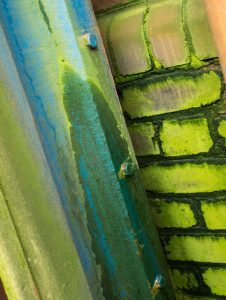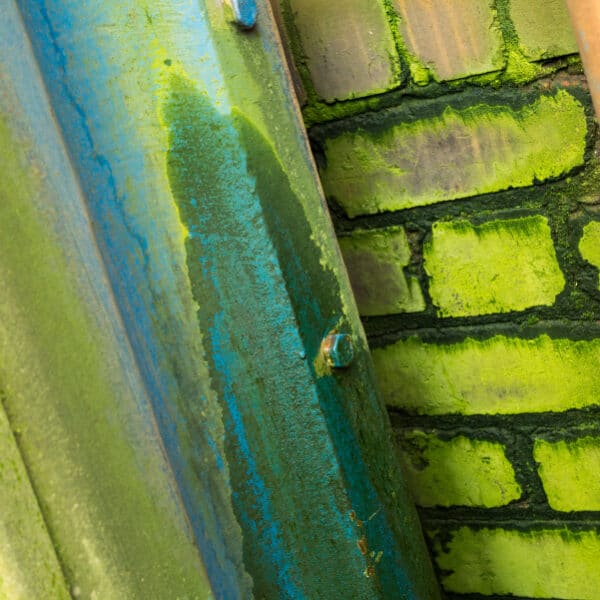 Introduction
Introduction
Whilst on holiday in Ireland recently, I had booked a holiday house and found, to my horror, large areas of mould growing on the bathroom ceiling. Further investigation by the lettings agency found a leak from the shower which had, over a period of time, caused the growth of mould. I left the house and moved to more suitable accommodation. This was not the first time I have seen mould, and it won’t be the last as mould spores are prolific everywhere. It is something most people come into contact with in their homes or at work at some stage.
Moulds release spores that, like dust allergens, can cause allergic reactions in people. Spores are microscopic particles released by moulds into the atmosphere in their thousands. Spores come into contact with skin and nasal and bronchial membranes, causing symptoms such as rhinitis, itchy eyes, eczema and, most importantly, asthma. Several conditions, such as Farmer’s lung and Sauna-taker’s lung, are caused by mould allergy.
Location of mould spores
Mould spores can be found as mushrooms and fungi that grow wild, on old rotting food and in areas of damp, such as window frames.
Causes of damp and mould
Mould growth is caused by excess moisture due to condensation through, for example, cooking, showering and drying clothes indoors where there is poor ventilation. Leaking pipes, rising damp in basements or ground floors or rain seeping in because of damage to roofs or around window frames are other causes.
The following are the optimum conditions for mould to thrive:
- Moisture (e.g. water leaks, humidity, cooking)
- Oxygen in the air
- Mould spores already present
- A food source for the mould spores (e.g. rotting food, paper, wood, cotton)
- Darkness (mould can’t grow under ultraviolet light)
- Warmth (mould can’t grow in freezing temperatures)
- Enough time (most moulds can begin to grow in 24-48 hours if the conditions are right)
Recommendations for the prevention of mould
The following are recommendations to prevent condensation and the optimum conditions for the growth of mould in a building:
- When cooking, use extractor fans and cooker hoods which are vented outside to manage the amount of condensation produced from steam
- Cover saucepans during cooking as this will also help minimise steam
- Where possible, don’t dry clothes inside or over radiators – it is better to dry washing outside
- Good insulation and adequate heating will keep a building warm
- Regular ventilation of rooms will prevent stale, moist air which can lead mould growth
- Planned preventative maintenance, such as repairing any leaks, will help contain the spread of mould
- Thorough cleaning kitchens, bathrooms and utility rooms will help prevent the conditions for mould growth
- Thorough cleaning of walls behind kitchen units and cupboards will help prevent the conditions for mould growth
- Thorough cleaning of food preparation areas and refrigerators, particularly refrigerator seals, is required. Do not let food decay
- Leave wardrobe doors ajar to ventilate clothes as mould can begin here
- Check tumble dryers are vented outside during use, or use a condenser-dryer to ensure good ventilation
- Get rid of old foam pillows and mattresses where mould spores can begin
- Damp wood can harbour mould spores. Avoid burning wood inside that has been kept in a damp shed
- Mould has a tendency to start under wallpaper that is beginning to peel. Tackle any areas of dampness on walls and remove wallpaper. It may be better to paint the walls
- Remove piles of old newspapers where mould can begin and then spread to other areas
- Keep houseplants to a minimum and change the soil regularly as mould grows on the surface of the soil
- Do not use humidifiers as humidity will encourage mould formation
Recommendations for people with mould allergies
- Avoid damp basements, compost piles, fallen leaves, cut grass and barns. Wear a face mask if these places are unavoidable
- Do not spend time in buildings where hay or grain is stored as mould spores will often be present, particularly in damp weather
- Do not go into damp and musty buildings as it is likely there will be mould spores present
- Avoid cutting grass, raking leaves and turning compost heaps where mould spores generally form
- Avoid country areas during harvesting, particularly when it is sunny and windy, as mould spores are be distributed easily
Next month, in part two of this article, we will cover the following areas:
- Types of mould
- Removal of mould from different areas of the building
QCS has policies on infection control to meet your CQC requirements.






